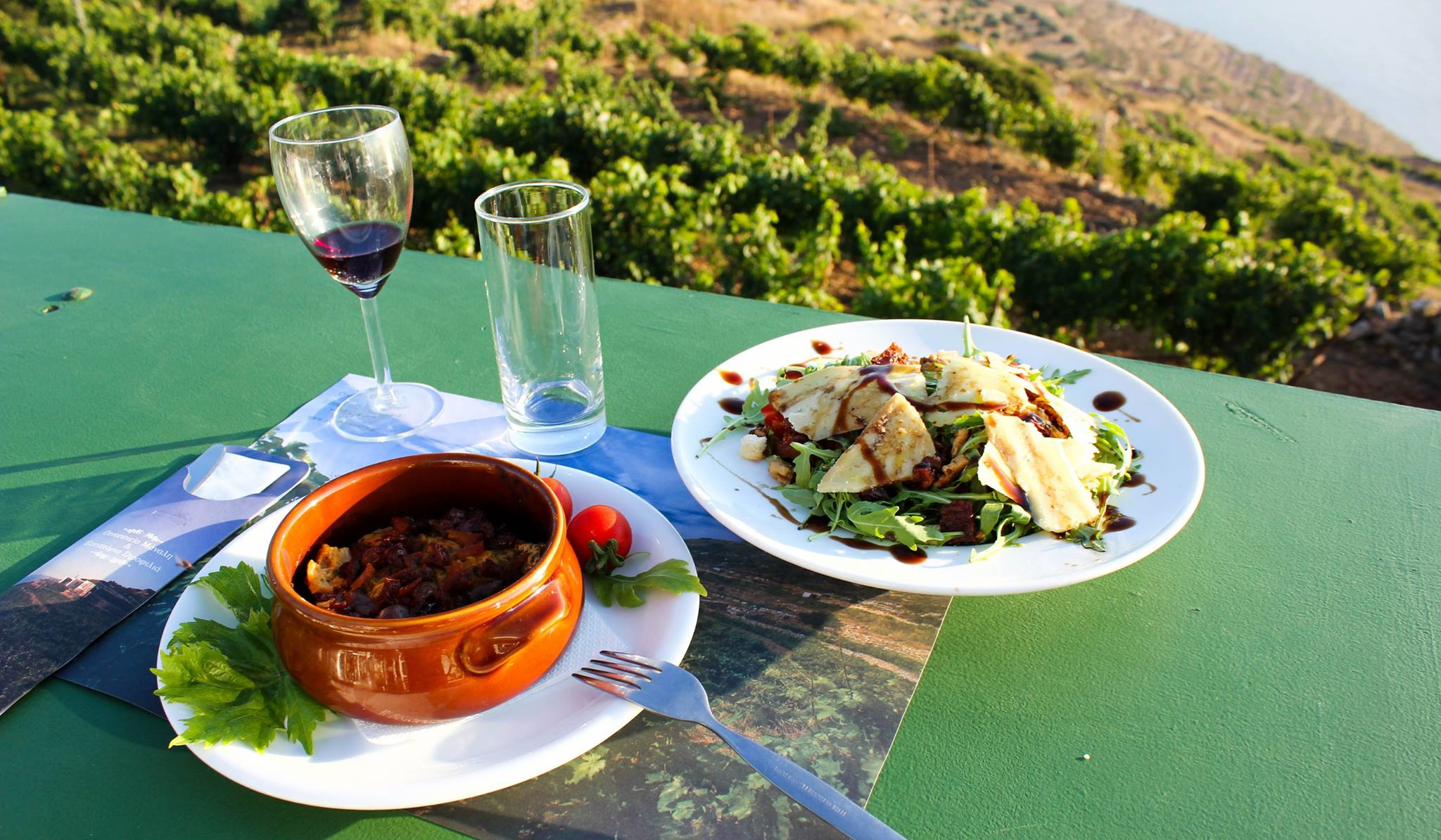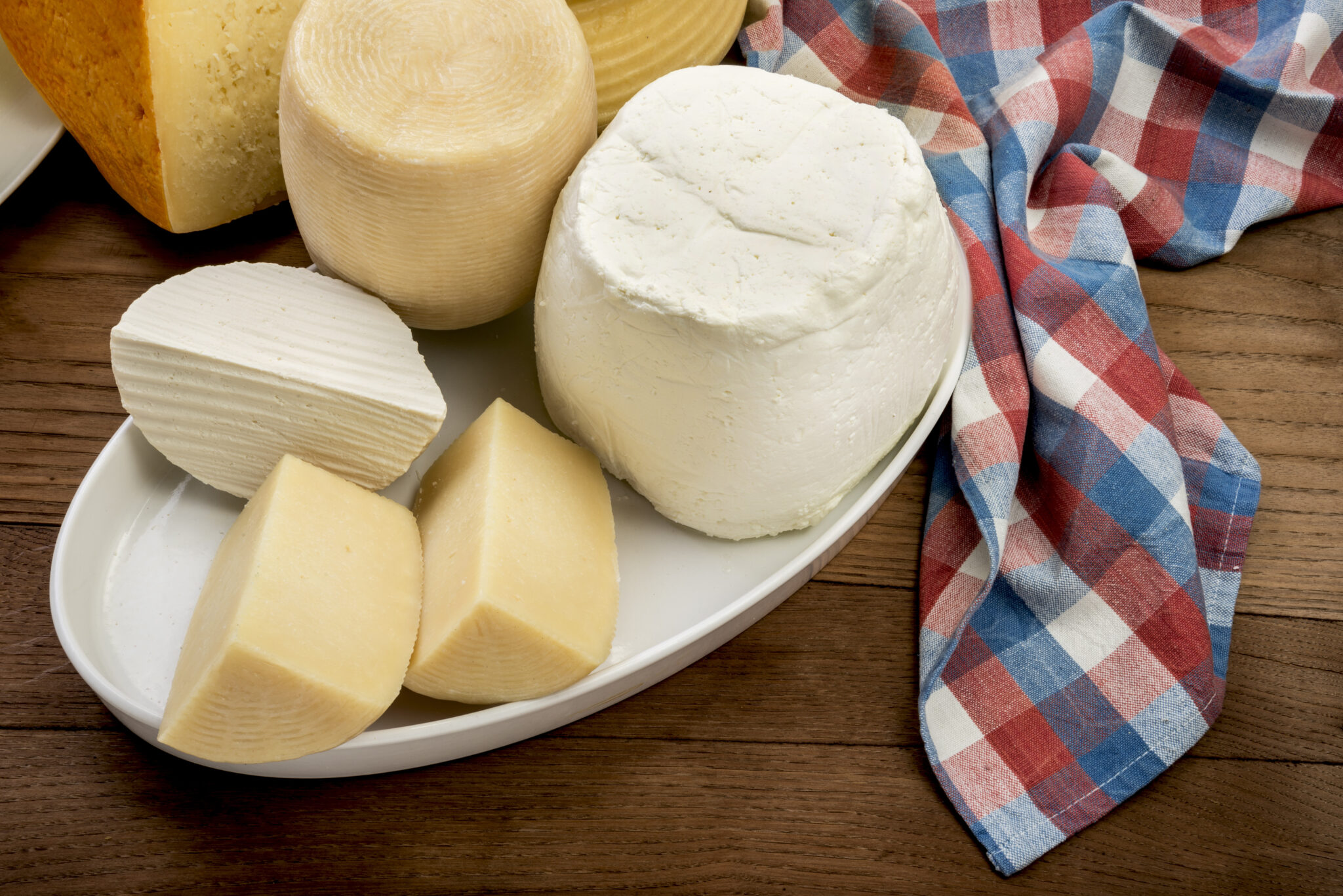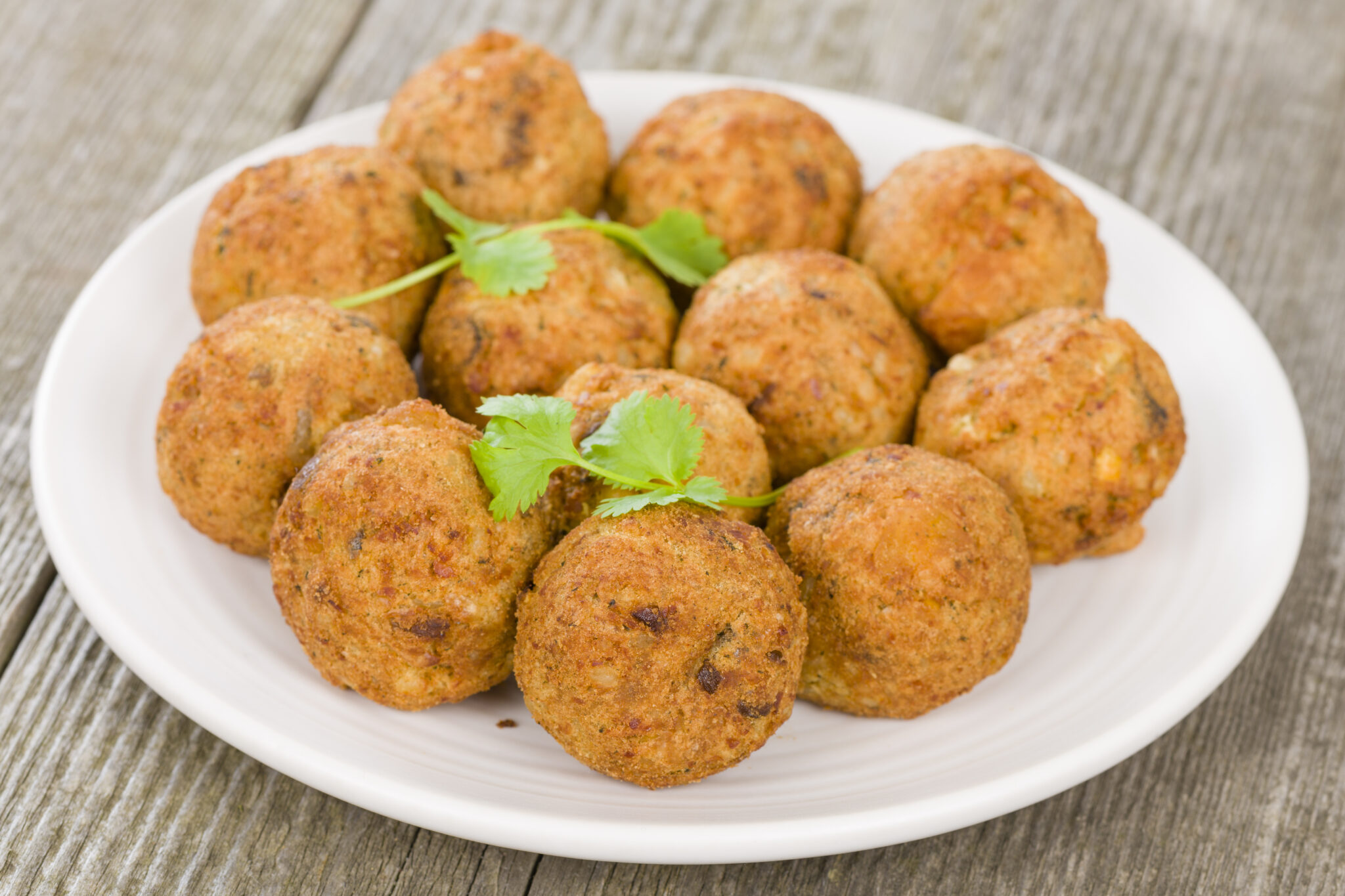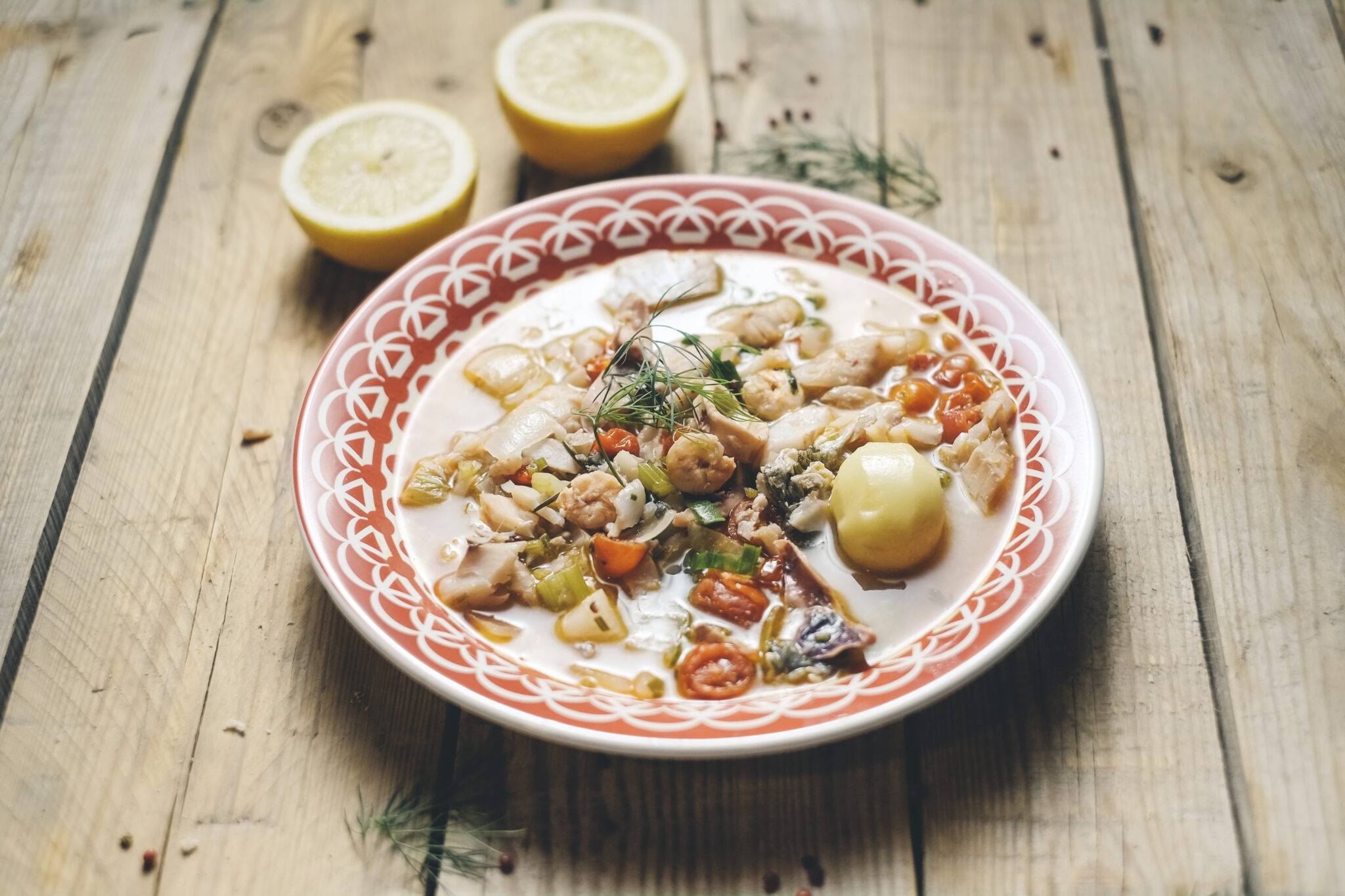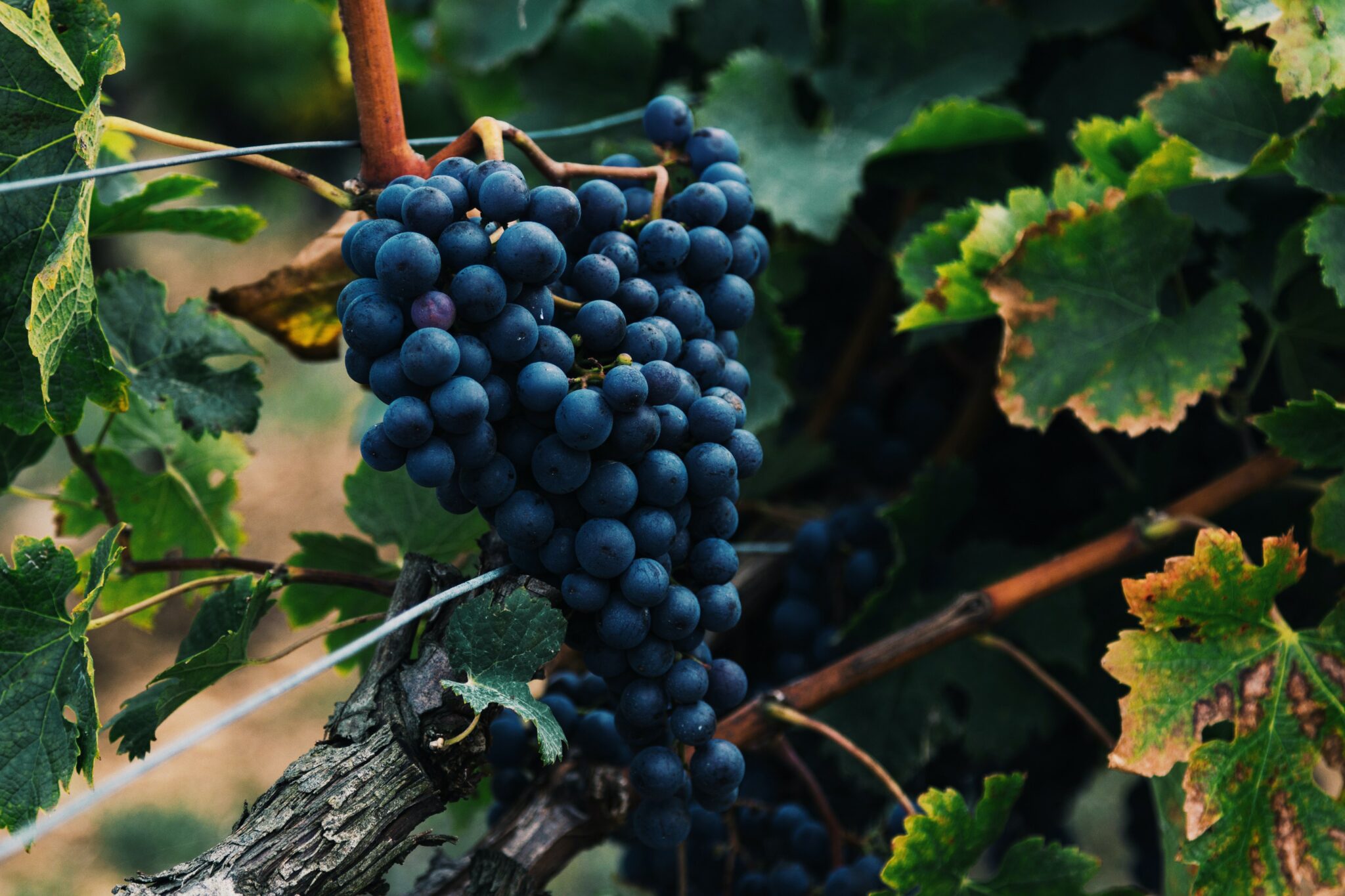The rocky and wild island of Sikinos produces few, but exceptional products, while its local delicious cuisine maintains its authenticity. The island is small and mountainous with infertile soil. A few locals cultivate the land, but the few products produced are exceptional as almost exclusively natural methods are used: zucchinis, cucumbers with a delicate aroma, tomatoes, eggplants, snap beans, and watermelons.
The many olive trees (Koroneiki variety) are used for the production of high-quality extra virgin olive oil for self-consumption. There is also a small capacity oil mill that bottles a portion of the produced olive oil.
Vineyards are cultivated, producing dry white, red, and rosé wines, as well as a sweet wine – there is also a certified winery. The dry vegetation of the soil provides capers and many aromatic herbs (among them “despoinovotanaki,” the herb of love according to tradition), resulting in high-quality thyme honey – a Sikinos Beekeeping Cooperative has been established.
Organized livestock farming is virtually nonexistent, except for free-range goat and sheep herds. However, home cheesemaking yields some interesting cheeses. Sikinos cheese, made from goat and sheep milk, is a type of mizithra that, when still unripe, is called melichloro. When fully ripened after 2-3 months, it is cut into pieces and stored in olive oil (ladotyri). The “male” cheese, made from an equal amount of goat and sheep milk and whey, is a soft, pale yellow cheese with a mild flavor that, apart from its name, bears no relation to the famous “male Naxos” cheese. Sour milk is also produced.
Characteristic dishes of the island include stuffed goat with rice, liver with aromatic herbs, stuffed rabbit with potatoes in the belly, various pies (with anthotyro, onion and sour milk, and greens), various veggie “meatballs” (fava bean balls, zucchini balls, tomato balls), plain and married fava, caper salad, “pourenes” (stuffed grape leaves with wild greens), kakavia (fish soup), sun-dried fish, and stuffed squid.
As for sweets, honey dominates as an ingredient. First place goes to sesame or almond pasteli with local thyme honey, followed by “diangourenia” or watermelon pie made from melted watermelon flesh, honey, and flour, thyme honey loukoumades, melopita (honey pie), melitinia (with unsalted local myzithra and wine), etc.
Oenological Identity
The small vineyard of Sikinos is planted with the grape varieties Mavrotragano, Limnio, Mandilaria, Assyrtiko, Monemvasia, etc., and cultivated in terraces. The island’s winery is open to visitors, and a restaurant operates within its premises (by appointment). Apart from wine, tsipouro and rakomelo are also produced at a domestic level.
Read also:
Cycladic Flavors at the Laid Back Tavernas of Sikinos
Sikinos: Hiking, Diving, and Wine Tasting in the Cyclades



